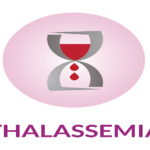“Author : Kunal Saha, Director & Co-founder, Vandelay Brands”
New Delhi, November 29, 2021:
With the pandemic and related restrictions becoming a part of our lives, we can say that walking or driving to the nearest pharmacy is very passé. The deep changes in our behaviour, induced by the black swan event of pandemic, has impacted our preferences like never before. It is more likely that today, if people need their insulin refill or a weighing scale, chances are more they will Google and be led to an e-commerce platform than going to a pharmacy. The rising uptake of e-commerce platforms for healthcare needs is a palpable pandemic trend and has fuelled its progress in India. Between October and December 2020, FMCG & Healthcare (F&H) category volume grew by 46 per cent year-on-year (YOY), as per the Q4 2020 E-commerce Trends Report by Unicommerce and Kearney. Not only in urban areas, use of e-commerce for healthcare is growing in semi-urban and rural areas as well – the report states Tier 2 and 3 cities accounted for a 90 per cent YOY incremental volume and value growth.
The latest trends in this economic segment are:
Subscriptions and D2C models to keep customers coming back
While omni-channel business is still popular, e-commerce platforms are increasingly exploring the subscription-based and direct-to-consumer or D2C models of business. Not only that such models allow them better insight into client preferences, they are known to be better when it comes to customer retention. According to some, the year 2021 will be the year of D2C as it has helped meet the increasing demand for essential services like no other.
E-commerce on mobile growing
Mobile e-commerce or m-commerce is one of the fastest growing subsets of the industry and have received a shot in the arm due to the pandemic. Even before the pandemic, almost 51 per cent of online sales in India was done through mobile devices, as compared to the global average of 39 per cent. They were found to spend an average of INR 10,000 per month through shopping on mobile devices and 83 per cent of consumers were found to make an online purchase through mobile phone at least once a week.
Tech inroads through AI, AR and analytics
For the startups that are able to adopt technology in a big way, implementing cutting-edge interventions such as artificial intelligence and augmented reality is becoming increasingly popular. AI-based software is adept in tracking customer behaviour and suggesting ways to enhance their experience whereas augmented reality has proven to be a boon for better customer experience. Add to this analytics that assess customer feedback and help in finding out unmet needs. Once the data is available, e-commerce platforms are increasingly using it for segmenting audiences by geographical location, total spending, age and gender, buying habits, to generate reports and improve customer relationship management (CRM).
Wearables and other digital health tools
If you were of the opinion that startups are the only users of healthtech, think again! Healthtech in the form of wearables and other handy devices are a real rage. Consumers are in control and they are tracking their health information real-time — according to Business Insider Intelligence research, more than 80 per cent of consumers are open to wearables. There is no denying the fact that e-commerce platforms facilitated their access to the consumers.
Convenient, Cost-Effective, & Customized Care
E-commerce platforms providing healthcare products and services are rapidly widening their offerings in order to provide the customers with a holistic experience. This is making the platforms a one-stop health solution provider instead of an online shop. By virtue of avoiding intermediaries and smoother supply chain, convenient, cost-effective, and customized care has become possible through healthcare e-commerce platforms. Bulk buyers such as hospitals who found managing a long supply chain difficult due to restrictions during lockdown are also switching to e-platforms which has helped them prevent a possible shortage of life-saving medicines and equipment.
healthysoch






